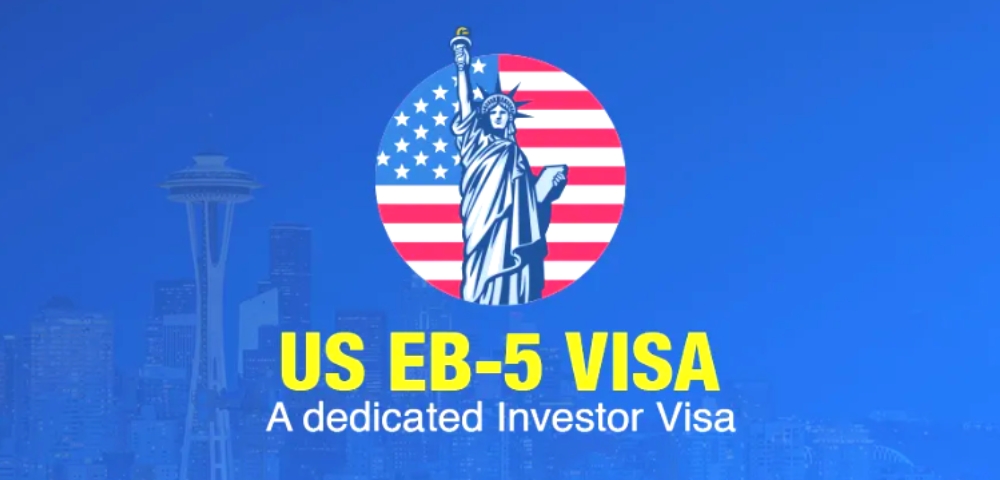
The EB-5 Visa, part of the United States Immigrant Investor Program, offers a unique pathway for foreign nationals to obtain a Green Card by investing in the American economy. This program, designed to stimulate economic growth through foreign investment and job creation, has become an increasingly popular avenue for individuals seeking permanent residency in the U.S.
This program, intricately linked with job creation, enables foreign investors to contribute significantly to U.S. economic growth. Applicants embark on this journey by filing the I-526 Petition, a crucial step towards achieving their dream of U.S. residency. The EB-5 Visa not only opens doors for investors and their families but also plays a vital role in bolstering local economies, exemplifying a harmonious blend of immigration policy and economic development.
The EB-5 Visa is a U.S. visa that provides a method of obtaining a Green Card for foreign nationals who invest money in the United States. To qualify for the visa, applicants must invest in a new commercial enterprise that creates or preserves at least 10 full-time jobs for qualifying U.S. workers within two years of the immigrant investor’s admission to the United States as a Conditional Permanent Resident.
Central to the EB-5 process is the I-526 Petition, where investors must demonstrate their investment's validity and its potential to create at least 10 full-time jobs. This job creation aspect is fundamental, ensuring that the investment significantly contributes to the U.S. labor market. Successful investors and their immediate families can initially obtain a Conditional Green Card, leading to permanent residency upon fulfilling the program's requirements. The EB-5 Visa not only serves as a pathway for investors to gain residency but also plays a significant role in bolstering the U.S. economy through foreign investment and employment generation.
The EB-5 program requires a minimum investment of $1 million. However, if the investment is made in a Targeted Employment Area (TEA), which can either be a rural area or an area with high unemployment, the minimum investment requirement is reduced to $500,000. This investment can be made directly in a business or through a Regional Center, a third-party intermediary that connects investors with new commercial enterprises.
The first step towards obtaining an EB-5 Visa is filing the I-526 Petition with U.S. Citizenship and Immigration Services (USCIS). This petition demonstrates that the investor has invested or is in the process of investing the required amount in a suitable project. It must include evidence of the investment and a detailed business plan showing how it will lead to the creation of at least 10 full-time jobs.
To qualify for the US visa application, foreign investors must contribute a substantial amount of capital into the American economy, either directly into a new commercial enterprise or through a Regional Center.
The investment must create or preserve at least 10 full-time jobs for qualifying U.S. workers within two years of the investor’s entry into the United States as a Conditional Permanent Resident. These jobs must be direct (for construction projects lasting over two years) or indirect, which are generated through revenues produced by the EB-5 investment.
This requirement is validated through the I-526 Petition, where investors must demonstrate their investment’s potential for job creation. The EB-5 Visa thus serves a dual purpose: it offers a pathway for foreign nationals to attain permanent residency in the U.S., while simultaneously fueling economic growth and employment opportunities within the country.
Obtaining a Green Card through the EB-5 Visa involves a strategic investment in the American economy. This process requires foreign nationals to invest in a new commercial enterprise that significantly contributes to job creation. Upon filing the I-526 Petition, demonstrating this investment and its expected job creation impact, investors embark on a pathway to U.S. residency.
After the approval of the I-526 Petition, the investor and their immediate family members (spouse and unmarried children under 21) can apply for a Green Card. Initially, they receive a Conditional Permanent Residence for two years. Near the end of this period, they must file Form I-829 to remove the conditions, proving that the investment was maintained and the job creation requirements were met.
Successful fulfillment of the EB-5 Visa criteria not only aids the American economy through investment and job creation but also grants investors and their immediate families the coveted Green Card, symbolizing permanent residency in the U.S.
While the EB-5 Visa offers a pathway to a Green Card, it is not without risks. Investors must perform due diligence on their investment and ensure that it meets the criteria set by USCIS. They must also be prepared for the possibility of immigration delays and the potential for the investment not to perform as expected.
The Immigrant Investor Program, under which the EB-5 falls, aims to attract foreign capital into the U.S. and to create jobs for American workers. It offers a pathway for obtaining a Green Card through significant capital contribution and job creation. By mandating investments in new commercial enterprises and requiring the fulfillment of the job creation criteria, typically through the I-526 Petition process, the program not only aids in economic growth but also facilitates employment opportunities
It is a win-win for both the investor, who receives the opportunity to live, work, and study in the U.S., and the American economy, which benefits from the infusion of foreign investment.
The EB-5 Visa presents a unique opportunity for foreign nationals to invest in the U.S. economy and in return, are eligible for a Green Card. This program aligns the goals of investors seeking U.S. residency with the economic interests of the country, promoting job creation and economic growth. As with any investment, potential EB-5 investors should carefully consider all aspects of the program, conduct thorough due diligence, and seek professional advice to navigate the complex process successfully.